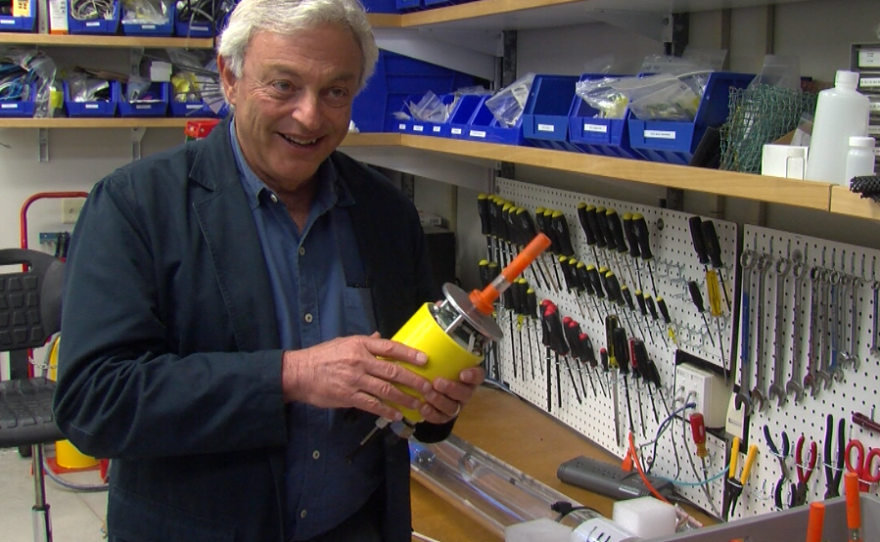On a recent stormy day, choppy waves crashed into the Scripps pier. Scenes like this are probably what most people picture when they think of waves. But surface waves aren't the only kind.
Scripps Institution of Oceanography researcher Peter Franks is interested in waves beneath the surface — internal waves.
"These are gigantic waves," he said. "If you could surf them, you'd surf for days — very, very, very slowly."
Franks studies how phytoplankton interact with internal waves. Phytoplankton are the tiny single-celled organisms that form the crucial base of the ocean's food chain. Internal waves can play a role in accumulations of plankton such as red tides, which can sometimes be toxic.
But Franks said piecing together exactly how that happens isn't easy.
"Understanding these dynamics, they all come down to physics and chemistry and biological interactions," he said. "And that's really hard to understand in the ocean."
Sticking one scientific instrument underwater wouldn't provide a full picture of these ever-changing, three-dimensional forces. Franks discussed this problem with another Scripps researcher, Jules Jaffe.
"My laboratory is basically dedicated to building innovative, new, exciting instruments that allow us to discover things about the ocean," Jaffe said.
Jaffe and Franks knew that what they needed was robotic plankton. Not just one robot, but many of them. In a new paper published Tuesday in Nature Communications, they and their colleagues describe the system of underwater automatons they built to tackle this problem.
"These are actually scientific instruments that we can deploy in swarms," Jaffe said.
This swarm of robots is capable of working underwater for hours, collecting data for a dynamic view of complicated ocean interactions.
"What we can do is watch the whole group," Jaffe said. "We get information about the three-dimensional structure of the ocean. So we're not sampling just a point. We're sampling all those points. And the coherent movements of those is giving us unique information people have never had before."
The swarm robots are each about the size and shape of a coffee can. They're colored bright yellow to make them easy to spot in the water. Franks thinks these squat yellow cylinders kind of look like the Minions from the animated "Despicable Me" movies.
"All they need are some overalls and some glasses and a big smile and they'd be perfect," Franks said.
In all seriousness, Franks said these robots are really helping to advance his research. A five-hour test off the coast of Torrey Pines provided real-world confirmation of his theories about internal waves and the formation of plankton patches.
For that test, Scripps researchers drove a boat out to sea and dropped 16 robots into the water, letting them dive to a preprogrammed depth. A larger piece of equipment floated on the ocean's surface and sent pings down to the robots below. Once the robots were retrieved, those signals were used to plot the movements of each robot.

Studying internal waves and plankton accumulation might sound pretty technical. But Franks said it's vital for understanding bigger facts about life on Earth.
"Every second breath you take is courtesy of the phytoplankton," said Franks. "The oxygen you are breathing is coming from the phytoplankton out there. And a third of that oxygen is made by phytoplankton that we didn't even know existed 30 years ago."
Underwater robots aren't new. But Jaffe said this swarm system does open up new possibilities by bringing together so many small robots to continuously and simultaneously record data underwater.
He said these robots might prove to be useful for listening to blue whales, or tracking underwater oil spills.
"One of the things that was really scary about the Deepwater Horizon disaster was whether that oil was drifting to the coast of Florida," Jaffe said.
Maybe these robots could've helped predict the movement of that oil. However researchers end up using them, Jaffe is excited to see what happens when these swarms multiply.






